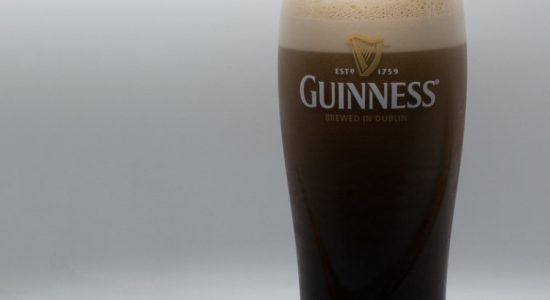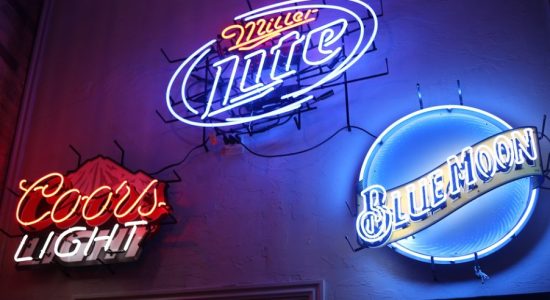What Is Regular Beer? and How Is Regular Beer Made?
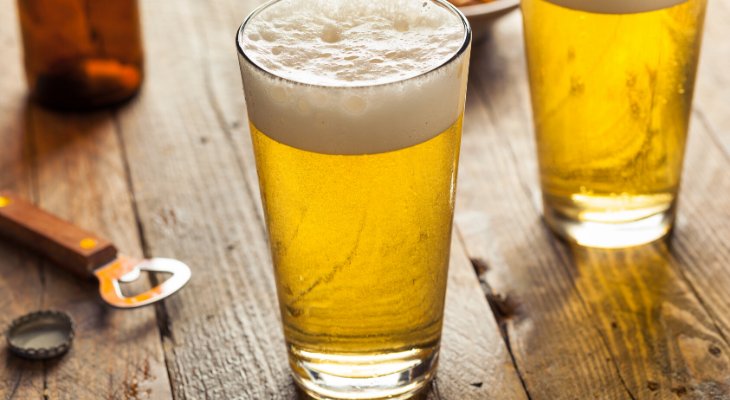
Regular Beer? What is meant by Regular Beer? I mean, at a first impression it sounds like the most normal beer to drink, and maybe it is, thereby the name, Regular Beer. But, this Regular Beer needs an in-depth review to be understood, as it deserves.
What is Regular Beer? Regular Beer is an American Craft Lager brewed by DuClaw Brewing Company. Just as simple as it sounds. Through time, DuClaw Brewing Company has brewed a lot of special, funny named beers.
Now, it was time for them to launch a normal tasting, and ‘normal’ named beer. And out of that thought came Regular Beer.
But, there is more to understand about this beer, than just why it was made. Keep reading this article, and I promise you, I’ll go through everything about Regular Beer.
What Exactly Is Regular Beer?
Regular Beer, brewed by DuClaw Brewing Company, is a relatively new beer. The beer was launched in the late summer of 2019.
Regular Beer is an American craft lager with 4.9% ABV and 13 IBU’s.
DuClaw Brewing Company, in Baltimore, Maryland, has been known for brewing very trendy beers. The company’s style is souped-up hazy IPAs, dessert-style stouts, and novelties such as the glitter-laced Sour Me Unicorn Farts.
But, as the sales rep delivered the liquid to the stores, customers kept asking the same, simple question. The question was, if the brewery was selling any regular beers, at all? And now I think you can figure out where this beers’ name derives from.
That’s right, the name is derived from the same asked question: Do the brewery sell any regular beer? Which is actually a pretty funny story, if you ask me.
So, this demand became the name of this new Regular Beer. An American lager with a little bold taste, but, a beer that tastes like beer.
But why actually make the beer? The company itself said they’ve made the beer because of all the different beers who goes to so far length in craft beers.
The company says that they think the people will want regular beers at some point, because of the many different and special kinds of beer there are on the market now.
But, regular beer is already an option, so they had to make it better than the domestic beer people are already used to.
Regular Beer is sold in regular 12-ounce cans with a white label with only the beers’ name and the slogan: ‘’a beer that tastes like beer.’’
The message and the look of this beer serves a reassurance to potential customers. It speaks to customers that are tired of too much flavor, or simply just are tired of an overwhelming marketplace. What the can communicate, is something you know is beer.
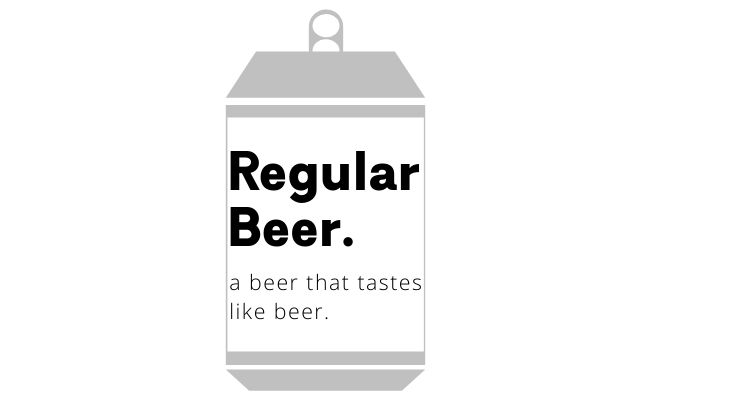
Also read: What Is A Lagunitas IPA?
How Is Regular Beer Made?
It could be pretty cool to know the exact recipe for the Regular Beer. Of course, that’s not something we should know. But, there are some things in this beer and about this beer we do know:
- It’s an American Craft Lager
- The hop variety in this beer is Chinook and Hallertau
- The different grains used is Pilsner, CaraPils, Vienna, and Flaked Rice
This is what we know about the beer’s ingredients. But, what does it all stand for?
Chinook Hops
Chinook hops can be used in any stage of the boil. They’re natural for American-style Pale Ales and IPAs, but they are also used in seasonal ales, barley, wine, and some porters and stouts.
This chinook variety is a cross between Petham Golding and a USDA male. It features a pine-like, spicy bouquet with robust flavors of grapefruit.
Chinook has undertaken a certain popularity among craft breweries since its release in 1985.
Hallertau Hops
Hallertau is a name for the original Garman Hallertau variety. But Hallertau is now the only namer for this variety, it also goes under the names Hallertauer and Hallertauer Mittelfrüher.
It arose for more than one hundred years ago and derived from an old, German landrace. Also, it’s one of the four noble hops and has a lightly flowery and spicy aroma.
Over the past 50 years, the Hallertau hops popularity has been declining. The main reason for this is a result of serious susceptibility to verticillium wild and poor yields. But, it has still been used to create a lot of offspring, most of which are wilt tolerant.
Pilsner Malt
Pilsner Malt is a type of pale lager malt made from two-row spring barley which is highly modified during malting and is kilned to a very blonde color value. Matter-of-fact, it only becomes around 1.5°-2.1° Lovibond.
Pilsner malt is named after the world’s first blonde lager, the pilsner, developed in the Bohemian city of Pilsen in 1842. To compare pilsner malt with pale ale malt, pale ale malt tend to have a color rating on 2° to 3°.
Carapils Malt
Carapils malt has its name from caramel and pilsner. The caramel is in the name because it is melted and crystallized sugar, and pilsner because it’s a blonde lager beer style, which was actually developed in the Czech city of Pilsen in 1842.
Carapils is a highly modified pale malt.
Normal pale malt is gently kiln dried in the oven at 122°F to 183°F (50°C to 84°C), but not Carapils. Carapils are best dried in a heated drum which allows more accurate control of airflow, moisture, and temperature.
Producing this malt, Carapils is heated up to 230°F (110°C) only rarely over 320°F (160°C). While producing at such high temperatures, the malt sugars will caramelize (thereby the name) and become glassy and unfermentable.
The caramelization will give the malt a nutty flavor. So, the higher the temperature is, the darker the Carapils color will be, which will add a stronger flavor. Most Carapils are almost the same color as kiln-dried pilsner malt. Around 1.5° to 2.4° Lovibond.
Vienna Malt
Vienna malt is created by 6-row barley and is versatile as a base malt and specialty malt in many beer styles. It has a malty, warm, and biscuity flavor and aroma, and a contributed nuances of golden to light orange in the finished beer.
Vienna malt is around 3.5° on the Lovibond scale.
Flaked Rice Malt
Flaked rice is helping to brew a light, clean and crisp beers. They are produced from medium-grain rice.
The flaked rice can be used up to 40% of the total grist, but it’s best to use lower conversion temperatures over a longer time. This will provide the best results. Flaked rice malt is 1.0° on the Lovibond scale.
Now we have gone through all the ingredients in the Regular Beer we know of. And I think we can conclude, out of the Lovibond ratings of the different malts, that regular beer is a pretty light beer.
This table below indicates the different ratings on the Lovibond scale.
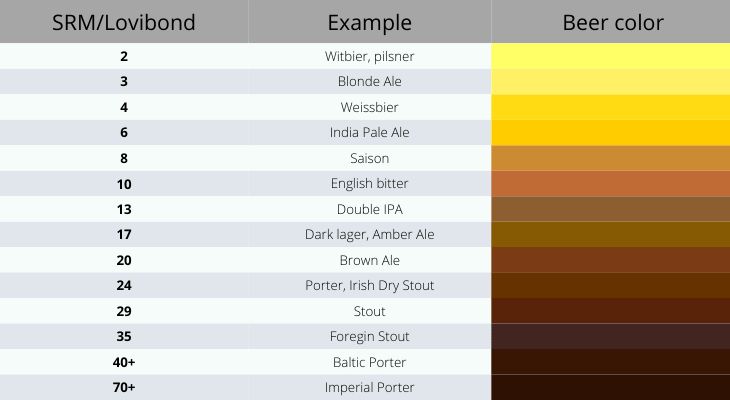
What Is American Craft Lager?
To know about American craft lager, you’ll have to learn what craft beer is in general.
Craft beer is, roughly spoken, a beer that is not brewed by one of the mega-breweries (industrial) corporations. More often than not, when the phrase is used, it is what it means. But, it is a kind of unclear thing to define something by what it’s not.
More precisely defined, craft beer is when beer is brewed by small and independent brewers. I hope this definition makes it a bit more clear and easier to relate to.
Having said that, there is a lot of very good beer made today, by brewers that don’t fit into the description. To highlight this, it should be made very clear, that just because the beer is not considered craft beer, it doesn’t’ mean that the beer is not good.
An American craft lager, like Regular Beer, is a lager, that is considered a craft beer.
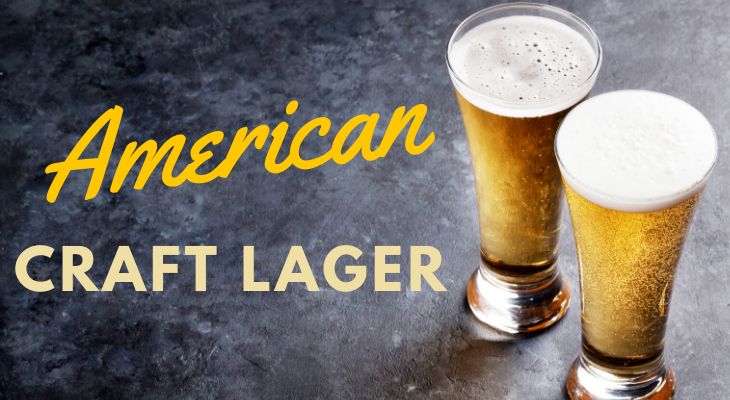
Read this article for more knowledge about other types of beer, and the Lovibond scale: What Is Ice Beer?
The Difference Between Craft Beer and Industrial Beer
In the section above, we talked about craft beer and what it was. In this section, we are going to talk more about the craft beer, but this time we’ll go into depth about the more technical parts of craft beer and industrial-beer.
The Main Difference Between Craft Beer and Industrial Beer
It is true, that all beers share the four main ingredients:
- grain (most often malted barley)
- hops (is available in many different variants)
- yeast (responsible for fermentation)
- water (up to 95 percent of beer’s content)
Despite that, there is a huge difference between craft beer and industrial beer. Craft beer is mostly very exclusive, and some will thereby say that craft beer is art.
Craft beer is, so to say, a brewmaster’s thoughts in a beer. This supports the acceptance of the playfulness and the fantasy in craft beers, which is not something we see in industrial beer.
Industrial beer is made in such large quantities for that one purpose, to increase the income.
The exclusivity and differentiation of craft beers have given an occasion to the market, which has attracted a wider and larger audience.
Also read: How Many Times Can You Reuse Yeast?
Procedure for Craft Beer vs. Industrial Beer
Craft beer is made with care, and the raw materials are going through a more strict process of selection before they are used in the brewing process.
The industrial beer producers have huge fabrics that produce tons of lifter, that are distributed national and international. This is also what we call a fully automatic process, which has nothing to do with the way craft beer is brewed in the small micro-breweries.
These micro-breweries are characterized by the fair machinery. In this case, the human factor is way more important and essential for the control in the elaboration of craft beer.
Another important part of the difference between the two brewery-types is fermentation. This is one of the most important stages in the preparation of the beer.
All beers, craft beer or not, have a first fermentation. After this process has finished, the beer runs out of CO2.
The difference between craft beer and industrial beer is, that craft beer needs a second fermentation to obtain natural gas, synthesized by the yeast itself, and that is assimilated by the body much better than CO2. This is usually artificially injected into industrial beers.
Let’s take a look at the flavor and the aroma. Because you don’t have to be an expert, at all, to be able to tell the difference between a craft beer and an industrial beer, just by looking at them.
The craft beer has more special colors and more body.
The biggest difference between a craft beer and an industrial beer is the flavor and aroma. The aromas and the flavors are more intense and well-defined in craft beers. That is also why more consumers attend to appreciate craft beer tastings and product quality.
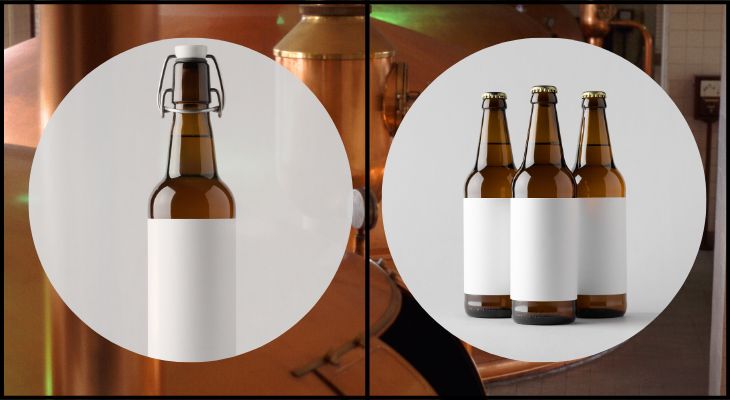
How To Make Regular Beer?
How to make regular beer? It’s hard to tell when it’s not defined what regular beer is. Different beer types are brewed in different ways. But, here I give you a pretty standard way of brewing beer, with starting point in a standard beer kit recipe.
There are generally four steps in beer brewing:
- Prepare the ingredients
- Brewing
- Fermentation
- Bottling
So, let’s take one step at a time.
#1 Prepare the ingredients
To start with, you have to make sure you have all the equipment you’ll need for brewing. Here is a list of what you usually have to use:
- Beer kit recipe
- Brewing kettle
- Sanitizer
- Auto-Siphon
- Stir spoon
- Fermenter + airlock
- Funnel (this one is optional)
So, now you’re ready to brew. First up you’ll need to clean and sanitize all of your equipment before you do anything else. It’s extremely important for the final result, that everything that comes in touch with the beer after the boil process has been sanitized.
#2 Brew
Take your gallon, and fill it up halfway with water. When heating the water, steep your grains for around 20 minutes, or more, until your water reached 170°F (77°C).
When you are removing the grain bag, be careful not to squeeze it, just let the water drip out of the grain bag into the kettle. If you squeeze it you extract tannins, and this will give the beer unwanted flavors.
Now, bring the kettle to a boil, and remove it from the heat when it reaches a rolling boil. When you have removed it from the heat, add your malt extract. Boil the mass again, once the extract has dissolved.
Then add the hops in various intervals. It’s important that it doesn’t boil over when you’re adding the hops.
When this task is completed, you have wort (also known as sugar water). Cool your wort down as fast as possible. The easiest way is to put the pot into ice water.
#3 Ferment
Pour the wort into the fermenter and add water to fill out the 5 gallons. The yeast needs oxygen, so you have to aerate wort by splashing it around. And now to add yeast.
Sanitize the yeast pack plus scissors (dry yeast is easiest to work with), and pour the yeast into the fermenter. Seal your fermenter and add a fermentation airlock. Store it in a dark and cool place.
#4 Bottling
The fermentation will often end after two weeks. When completed, you start the bottling. Clean everything before bottling.
Boil the priming sugar in water, and cool it down. When cooled down, add it to the bottling bucket.
And now to the bottling. (Siphon) the beer from the fermenter and into a bottling bucket. Make sure to leave as much sediment in the fermenter as possible.
Attach a bottle filler to a hose, and hose to bottling bucket spigot. Open the bottling bucket spigot and push the bottle filler down to the bottom of the bottle.
Fill each bottle right to the top. When you remove the bottle filler, it will leave an appropriate amount of space at the top of the bottle.
Cap the bottles with caps and a bottle capper, and store the bottles at room temperature for around two weeks. This will give your beer time to carbonate.
The very last thing to do is to refrigerate the bottles with beer.
This is just one way to do it. But, of cause, the different beer kit recipes are to be followed differently. This is just a relatively standard course of action.
Are you more interested in brewing? Read this post: Best Beer Recipe Kits
How Strong Is Regular Beer?
DuClaws Regular Beer has 4.9% ABV. Compared to other American Lagers this is pretty standard. There is a lot of different average ABV for different beer types, but all are close to each other. In the table below the average ABV for the most common beer types appears.
| Beer Category | Average ABV |
| Light Beer | 4.05 |
| Weissbier | 4.15 |
| English Bitter | 4.27 |
| English Pale Lager | 4.71 |
| American Pale Lager | 5.16 |
| Witbier | 5.25 |
| Cream Ale | 5.27 |
| English Stout | 5.27 |
| American Pale Ale | 5.44 |
| Red Ale | 5.96 |
| American Brown Ale | 6.10 |
| Saison | 6.32 |
| American Stout | 6.38 |
| American IPA | 6.47 |
| American Porter | 6.55 |
| Baltic Porter | 8.01 |
| American Strong Ale | 9.21 |
| Eisbock | 13.92 |
What Is DuClaw Brewing Company?
DuClaw was founded in 1996 by Dave Benfield, who is still the owner of the company.
Dave followed his passion and started brewpubs in Maryland. This wasn’t easy, haunted by the law. But, this wasn’t enough for David, he wanted to get more DuClaw to more people.
Let’s start at the very beginning. Dave started home brewing during his junior year at Loyola University. Within a couple of years, more of his friends and family began to drink his beer, which all lead to his first decision about opening a restaurant brewery.
Then, in 1996 David founded DuClaw Brewing Company. David had always been much at the leading edge of, what was then, a slowly emerging craft beer industry. But today, DuClaw is experiencing a very well-deserved growth.
Like every other company, DuClaw has had difficulties throughout time. The last few years have been lead by increased competition on the beer market together with flaws in the company’s beer, which have led to challenging times for DuClaw.
Fortunately, David is not just a brewer, he is also a skilled businessman. Long story short, David and his team figured out what was wrong with their beer, fixed it, and is now making incredible beer.
After DuClaw opened their new taproom and brewery in Baltimore, DuClaw sold their restaurants to focus on their brewing, bottling, canning and distributing beer.
At the time they closed their restaurants, they had moved their 15-barrel system to a 40 and later into a 60-barrel system that gave the brewery many options.
If you liked this article you should read this too: What Is a Blue Moon Beer?



